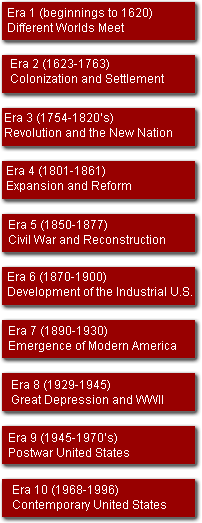 |
 |
|
|
 |

ERA 6 HIGHLIGHTS IN NEW HAMPSHIRE: industrialization, immigration, people of color, changes in power sources, the economy, effects on the environment, politics and power, women in the public sphere, social welfare actions As the title suggests, industrial
development defined the era. While attempts at Reconstruction in a devastated
South struggled with the questions of a bi-racial society. New Hampshire,
with much of the rest of
Most of the state's population
lay in the south, as did most of the manufacturing. A surge of immigrants
from French Quebec rode the railroads into New Hampshire to work in the
mills. By 1900, 2%
Steam power had begun to replace water power by 1870, but by 1900 gasoline engines and electric motors foretold an even newer age of power to come. During Era 6, manufacturing became the dominant employer of workers in New Hampshire; agriculture would never again dominate the New Hampshire economy. Boots and shoes topped the leading industries, followed by cotton goods, once first but now second. Wool manufacturing, lumber and timber products, and paper and wood pulp followed in that order. Railroads provided a way for raw materials and finished products to come and go between New Hampshire and the rest of the country. Local farming suffered from competition from Midwestern products shipped in by the railroads, but, on the other hand, highly perishable local dairy products could be shipped to nearby city markets like Boston. Farms therefore turned more toward dairying. The railroads opened up the North Country to logging. Other technologies contributed. The adoption in 1877 of the production of paper from wood pulp rather than rags made Berlin the industrial center of the North Country, and Berlin eventually became the biggest producer of newsprint in the world. Record timber harvests alarmed some environment watchers, and exuberant industry began to have adverse effects on water quality and availability. Immigrants came to work in both the logging and paper industries. The railroads also led to the rapid expansion of tourism. The upper classes and moneyed vacationers patronized the large hotels in the White Mountains or on the shore, and middle class vacationers paid to stay with farm families who took in summer boarders from the cities. Profits from industrialization led to new sections of cities built in spirited Victorian styles. These can still be seen today in most New Hampshire cities and towns. Politically, the expansion of industry led to moves by industry to influence and control government. In this era, increasing political corruption and influence peddling was perceived to be against the interests of the "common people." Still not allowed to vote, women were finally accepted into the State Teachers' Association and a few became practicing lawyers and doctors. The temperance and suffrage movements joined forces and regularly petitioned legislatures and constitutional conventions for action in favor of their causes. Many of the causes begun as ideas for reform in the pre-Civil War era developed into social welfare action. |